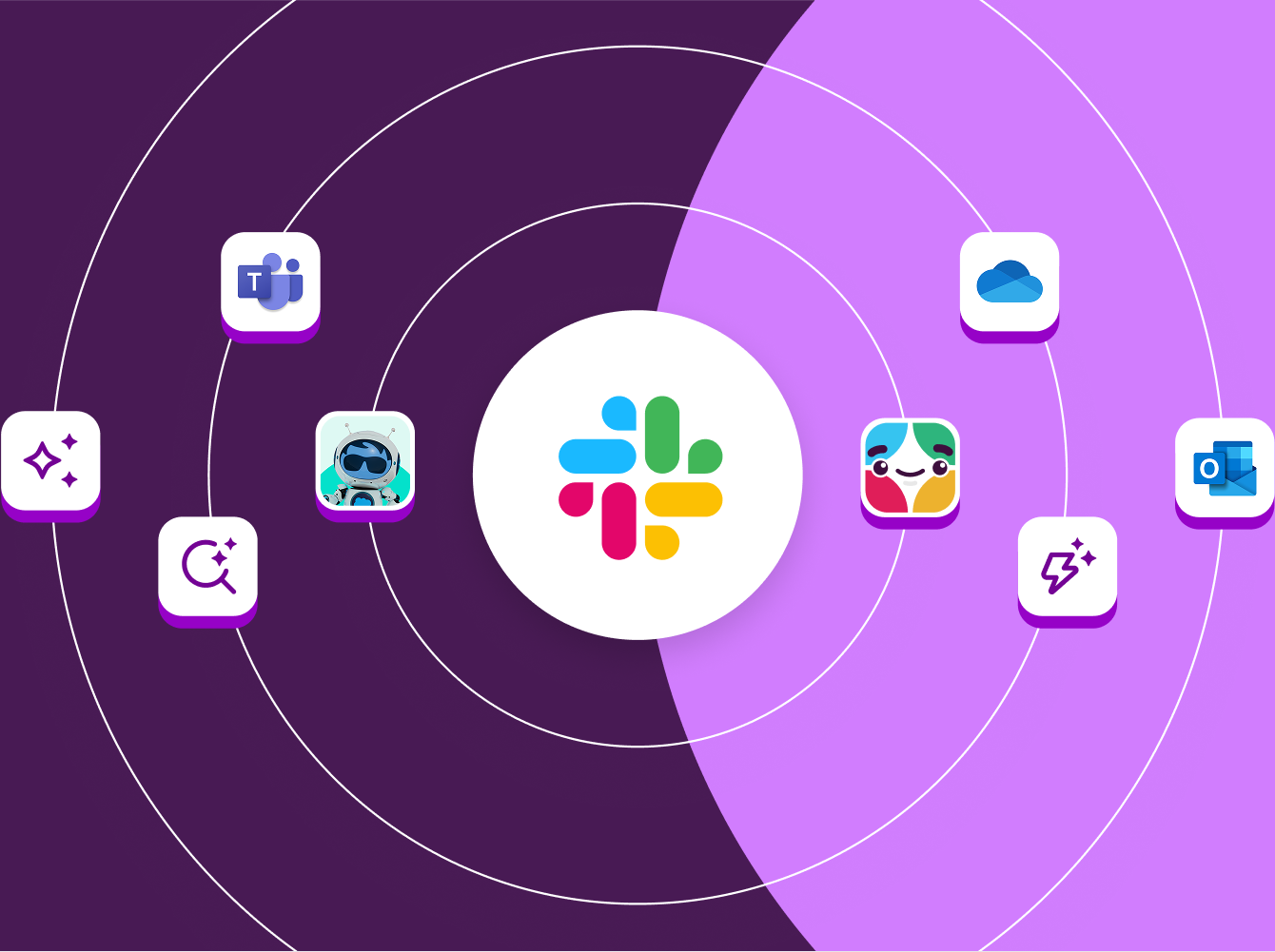Organisations are under increasing pressure to do more with less. This heightened focus on operational efficiency underscores the importance of measuring and maximising the value of tech investments. Slack, the AI-powered platform for work, offers a flexible architecture that empowers teams to streamline workflows, collaborate effectively and drive value across the organisation. Let’s explore Slack’s value realisation methodology and how it can help you to quantify value at your organisation to unlock the full potential of your team.
What is value and why is measuring it important?
We think about value as a quantifiable or qualitative benefit and we align those benefits with business goals and strategic objectives. Articulating value effectively involves telling a compelling story, backed by meaningful metrics that resonate with your organisation’s leaders. By measuring value, we can identify gaps, highlight best practices and establish a framework for ongoing value realisation.
Slack’s value realisation methodology
The value realisation methodology at Slack focuses on quantifying, optimising and collaborating on strategic business goals and metrics to align Slack capabilities with business outcomes.

By analysing baseline metrics, identifying areas for improvement and establishing a value-centric partnership, Slack helps organisations to:
- Show success and return on investment
- Facilitate data-driven decision-making
- Understand how Slack uniquely solves business problems
- Replicate success across your business
At Slack, we have a dedicated value realisation team focused on showcasing the value that customers have realised and can realise through the platform. The value realisation team supports immersive engagements, customer value stories programmes and value perspective services to help customers quantify, optimise and collaborate on the value that they derive from Slack.
Adopting the Slack value realisation methodology at your organisation can help you to highlight the impact of Slack on the organisation, secure resources for growth and make strategic decisions based on data-driven insights.
Tools that you can use to drive Slack value at your organisation
Build a value map
By creating a value map, you can clearly articulate the impact of Slack on helping your organisation to achieve business objectives. The output of a value map can highlight best practices and use cases from different parts of the business to capitalise on what’s working really well today, or to identify opportunities to address a gap or need. But how do you go about creating a value map and maximise your value with Slack? Follow these four steps:
- Align value with business goals: Consider revenue growth, customer satisfaction, cost savings, efficiency gains and operational excellence.
- Define objectives: What are the means to achieve results that are strategic, actionable and measurable?
- Identify Slack capabilities: Features and products in the productivity platform that enable the delivery of objectives.
- Measure success: Establish success metrics that track progress against business goals and KPIs.

After creating a value map, validate it with your leadership and key stakeholders. Ask validation questions to ensure alignment with overall business strategy and identify areas for improvement. The value map can be a powerful tool to understand the existing value that your organisation has realised, track real-time value when implementing improvements and plan a roadmap for improvement.
Usage-based ROI analysis
One way to quantify the value of Slack is by looking at the hours and money saved through usage data and conservative assumptions. For example, we use an assumption that an active Slack Connect user saves one hour per month by reducing back-and-forth email time. We multiply this by the total number of active users, take a 25% cut of those to account for outliers, and then multiply by a $70,000 USD salary to contextualise into money saved. For an organisation with 100 active Slack Connect users, we would conservatively estimate savings of $31,500 USD per year from this feature alone.

Apps and workflow actions, reduced meeting time through Slack huddles and clips, search and file sharing efficiency, and the time savings from Slack Connect all contribute to the overall value realised by organisations. To understand your organisation’s usage, visit the Slack analytics dashboard.
By breaking down the calculations for each aspect of Slack usage, organisations can gain a clear understanding of how these time and cost savings are derived. Assumptions such as the number of actions considered high-value, the average employee’s annual salary and the percentage of actions that contribute to productivity gains are all taken into account to provide a comprehensive view of the value generated. It is important to align on the inputs and logic with stakeholders and decision-makers in order to have meaningful conversations about the value of Slack adoption.
By leveraging the data and insights provided by Slack’s features and functionalities, organisations can maximise their value and drive efficiency in their day-to-day operations. With a clear understanding of the time and cost savings generated, businesses can make informed decisions about how to further optimise their usage of Slack and enhance their overall productivity.
Deploy a survey to understand the value that your organisation is realising
Conducting a survey is a great way to understand and qualify your end-user needs, preferences and usage patterns. Surveys are best conducted pre- or post-launch, or on a regular cadence (quarterly, annually, etc.). To help you navigate the survey process effectively, we have outlined five steps that will ensure a successful survey deployment and analysis.
- Create a survey planning document: The first step in the survey process is to create a survey planning document. This document serves as an internal reference guide that outlines the survey goals, target end users, messaging templates and the link to the survey. By sharing this document with your team, you can ensure alignment and collaboration throughout the survey process.
- Design your survey: Once you have established your survey goals and target audience, it’s time to design your survey. We recommend that you keep the survey concise (up to ten questions) and vary the question types to maintain respondent engagement. Build your survey using a platform such as Google Forms or the Slack app Polly. Remember to ask questions that provide insight into the goals of your survey.
- Launch your survey: With your survey designed, it’s time to launch it to your end users. Request an internal stakeholder to send the survey in a prominent channel or distribute it via email using the proposed messaging. Offering a gift for completing the survey and setting a due date for responses can help to increase participation rates.
- Conduct 1:1 interviews: As responses start coming in, consider conducting one-to-one interviews with selected end users to gain deeper insights into their Slack usage. These interviews can provide valuable context and personal stories that enrich the survey data. Offer incentives (such as Slack goodies) to encourage participation in these interviews.
- Present survey results: Once the survey is complete, it’s essential to analyse the results and present them to your stakeholders. The insights gathered from the survey will inform your next steps for enhancing end-user experience and enablement, and provide qualitative analysis to gain valuable insights and drive informed decision-making.
Document use cases in value stories
One effective way to showcase the impact of Slack within your organisation is through value stories. Key components that a value story highlights are the challenges faced, the solutions implemented using Slack and the tangible results achieved. To create impactful value stories, it’s important to focus on the following:
- Identify the business impetus for change, such as the need to scale for growth, tackle planned or unforeseen changes, execute mergers and acquisitions, or implement desired technology changes.
- Highlight the shortcomings of the previous system, such as process bottlenecks or employee sentiment issues. Provide before-and-after implementation details to showcase the transformation.
- Summarise the key ROI metrics that demonstrate the value generated by using Slack.
To start collecting value stories within your organisation, follow these steps:
- Identify power users of Slack and add them to a dedicated channel. You can use this channel as a forum to collect Slack stories.
- Set up a workflow in the channel to collect value stories without friction. Follow up with users to quantify their impact.
- Document the stories and focus on the narrative, estimates and time frames to understand the before-and-after impact.
By collecting and using value stories in Slack, organisations can showcase the real impact of the platform on their day-to-day operations. These stories not only inspire and educate but also provide valuable insights for enhancing the overall value strategy within the organisation.
In conclusion
Unlocking value with Slack is a transformative journey that requires collaboration, optimisation, and quantification and qualification of business goals and metrics. By leveraging Slack’s innovative features, tools and value realisation methodology, organisations can drive success, increase productivity and achieve their strategic objectives with confidence. Start your journey towards becoming a value expert with Slack.
More resources
Slack Certified: Use Slack analytics to drive adoption and engagement
The Total Economic Impact of Slack for Technical Teams
The value of Slack for software developers
New IDC analysis: the value of Slack for the enterprise










